No need to run to the store for expensive equipment! How to make a gas water boiler with your own hands

Gas boiler - unit for generating thermal energy for space heating or heating water by burning gaseous fuel. It is possible to make such a device yourself.
It is important to calculate the parameters correctly equipment and not to neglect safety rules. The main difficulty is obtaining permits for the operation of a homemade gas boiler.
Even the slightest deviation from the prescribed standards leads to a complete ban on the use of homemade structures, therefore Only a person with extensive experience should make a gas boiler on their own in the installation and maintenance of such installations.
Content
Types of water gas boiler for heating a private house
The operating principle of gas heating boilers is as follows: the heat generated by the combustion of gas is transferred to the liquid, which then moves through the heating system, heating the room. There are differences in the design of different types of gas boilers.
Wall
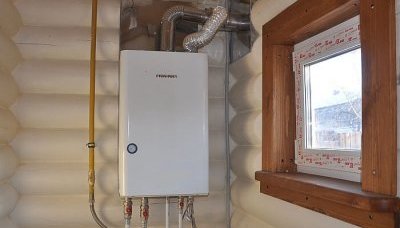
The main parts include:
- Burner — a rectangular structure with holes arranged in a certain order through which gas is supplied from the nozzles below.
- Combustion chamber.
- Heat exchanger - one or two. The two-unit design involves installing a primary device in the form of copper pipes with plate fins above the burner. This allows the heat of the gas flame to be transferred directly to the heat carrier with maximum efficiency.
- Secondary heat exchanger It is usually made in the form of a set of thin metal plates, through which running water passes and is heated by a hot coolant.
- Gas valve, controlled by the automatic system, regulates the degree of fuel supply.
- Heating supply and return pipelines.
- Membrane tank.
- Electrical unit.
- Fan helps carbon dioxide escape from the unit through the chimney.
- Circulation pump.
- Automation system — a set of sensors that analyze the state of nodes and connection points to input and output routes, and an actuator that generates the necessary control signals.
Floor
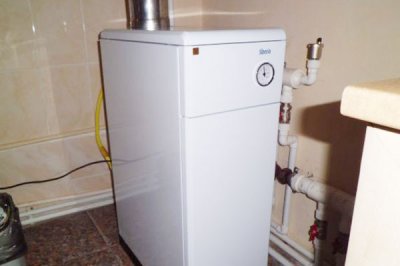
Differs from the wall-mounted one in the way it is attached, and also, since its weight is limited, manufacturers equip it with a cast iron heat exchanger, which is of higher quality and more reliable.
Floor models are single-circuit units with an open combustion chamber, in which minimum of various automation and control devices.
- Burner.
- Combustion chamber.
- Heat exchanger.
- Expansion tank — excess fluid is drained into it.
- Gas valve.
- Electrical unit.
- Fan.
- Plate-shaped heat exchanger.
- Pump.
- Automation system.
From a cylinder
- The basis of the design is a gas cylinder for 50 l (heats the room up to 70 sq. m). A piston with a lower nozzle is immersed into the cylinder.
- The nozzle is a hollow tube., through which combustion air enters.
- A “pancake” of slightly smaller diameter is welded to the bottom of the piston, than the cylinder. The arc-shaped blades welded to it create a vortex flow over the smoldering fuel.
- Chimney pipe.
- The top of the cylinder after the handles have been installed on it used as a lid.
- The pump provides forced circulation.
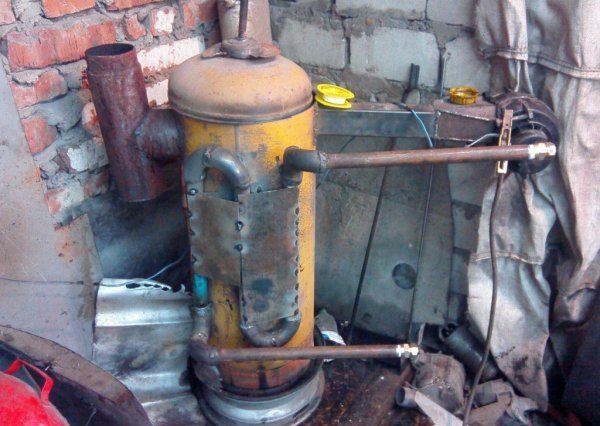
Photo 1. Gas boiler made from a cylinder. The device is connected to the water heating circuit.
How to make a gas boiler with your own hands
The production of a gas boiler consists of several stages.
Selecting a project, drawings
Having decided to make a gas boiler yourself, find a suitable project with drawingsThey should contain detailed information about heating boilers, connection, cooling, smoke exhaust, deflector and other nuances.
Attention! Before you start making, get a good understanding of the drawings and find photos of finished schemes. Any inaccuracy or change will adversely affect future operation.
During production take into account heat loss in each room, where heating is planned. Even in rooms with equal areas, heat output will be different.
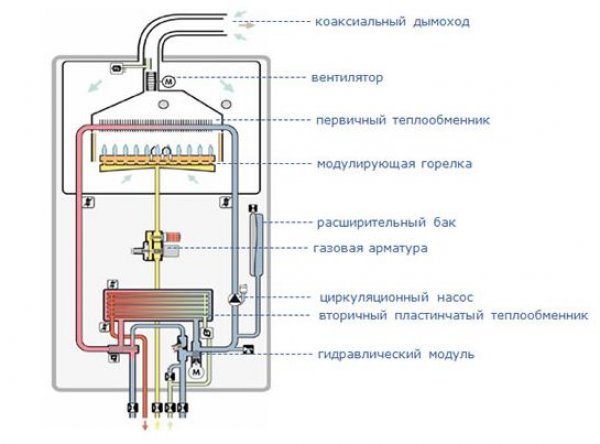
Photo 2. Drawing of a wall-mounted gas boiler. The arrows indicate the components of the heating device.
Calculations are being carried out with a 10% reserve, based on the actual dimensions of the objects.
Reference. The easiest way to calculate: for every 10 sq. meters of area required 1 kW energy. The calorific value of gas is 6.55 kW.
The amount of energy consumed by the boiler per day is divided by its calorific value and This is how the required boiler volume is obtained.
Thus, it is necessary:
- calculate the entire hydraulic system;
- take into account the costs of the smoke exhaust system, including the deflector;
- decide on the diameter of the pipes in advance;
- set the required pump power;
- calculate the resistance of the system.
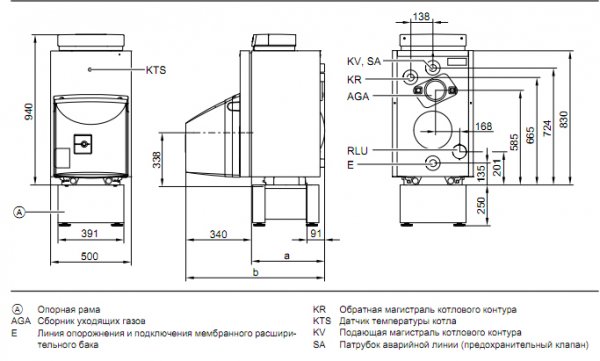
Photo 3. Drawing of a gas heating boiler. The dimensions of the device and its components are indicated.
Materials
After selecting a project the master calculates the amount of materials on the heating boiler. The mentioned metal cannot be replaced with another one to reduce the cost of installation: it may turn out to be softer, and this will make the structure unusable.
Materials for work:
- metal and gas pipes;
- steel sheet;
- doors for creating a firebox;
- brick;
- reinforcement;
- clay;
- moisture-proofing material (tar);
- cement;
- galvanized sheet metal.
Important! Some components, such as thermostat or deflector, It's easier to buy it in a specialty store than to make it yourself.
What to look for when choosing purchased parts for gas boilers:
- It is better to choose programmable thermostats, to control and regulate the boiler temperature with their help. Domestic analogues are not inferior to foreign models in quality.
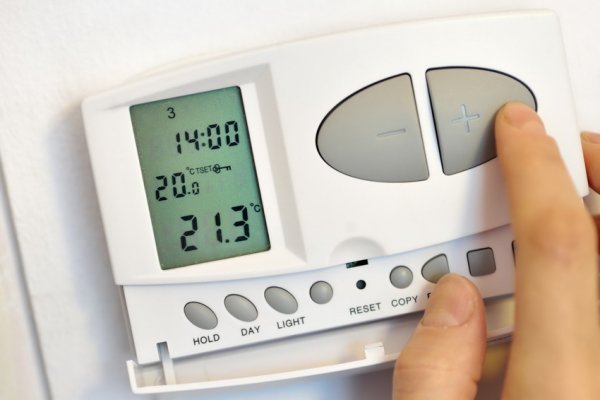
Photo 4. Programmable thermostat for a gas boiler. With its help, you can set the appropriate temperature.
- The deflector is installed on top of the chimney pipe and provides exhaust. Suitable in the form of a conical umbrella made of stainless steel.
- Automation includes: Flame control module, overheating protection, draft controller, blast valve. All of the listed devices are required for stable operation of the unit.
Tools:
- welding machine;
- soldering iron;
- set of screwdrivers and keys;
- hammers;
- pliers;
- level;
- corner;
- roulette;
- welding tool;
- thermostat;
- automation;
- deflector.
Making a device, homemade heat exchanger
Construction stages:
- The easiest way to make a floor lamp with your own hands gas boiler, which is installed on the foundation. Therefore, first they dig out a hole about 80 centimeters deep. Sand is poured onto its bottom, filled with water and left to soak. Then stones, broken bricks and rubble are laid out slightly below ground level.
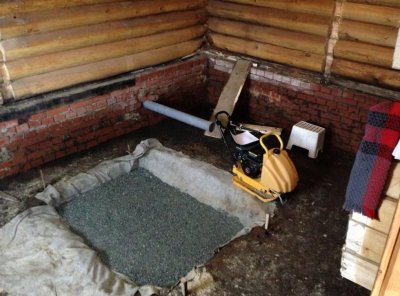
- The formwork with the frame is assembled and filled with concrete mortar, after 24 hours it is removed. The area under the formwork is filled with gravel and sand and covered with a moisture-proofing material.
- They lay out a wall of brick and cement composition, protecting the main wall from the heated gas boiler. The height and width of the brick wall 10 cm more, than the dimensions of the boiler.
- Sheets are cut out according to the drawings, prepare corners, tubes, and internal parts.
- The parts are assembled into a single system. Before this stage, watch a video showing the process. Incorrect placement of components leads to the failure of the structure. When performing welding work, one must not forget about safety: the master puts on protective gloves, a special mask and work clothes.
- A heat exchanger is made from a steel tank and a copper tube., thanks to which the water in the boiler is heated. Two holes are made at the top and bottom of the tank, corresponding to the diameter of the tube. The tube is bent into a spiral and inserted into the tank. Fittings are installed on the ends of the tube coming out of the tank.
- After assembly, the edges are cleaned and the unit is painted. The latter is done to prevent condensation from appearing during the cold season and to prevent the metal from starting to rust.
- After installing the boiler, a chimney is welded to the side of it. - a metal pipe not less than 20 cm, through which carbon dioxide will leave the unit. A hole is cut in the roof and the pipe is raised by 30-40 cm above the roof. The gaps between it and the roof are filled with foam and mineral wool.
- An uninterruptible power supply is connected to the boiler. The stabilizer is attached nearby in a dry place where water will not get in. It cannot be overheated or frozen.
Connection to the heating system
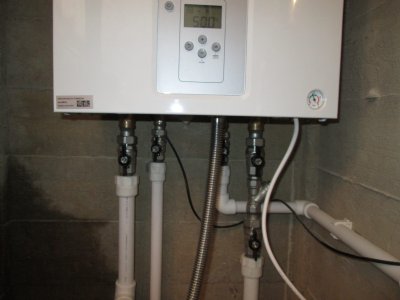
The legislation stipulates that before installing a gas boiler The owner must obtain permission for installation from the City Gas Service.
- Shut-off valves are purchased for the direct and return heating pipelines — American-style taps that allow the boiler to be dismantled in the event of an emergency.
- To the return pipeline of the coolant install a mechanical water purification filter.
- Installing shut-off valves on the gas pipeline, to which the boiler will be connected, in the form of a gas tap and a gas filter.
- Connect the gas pipe that supplies fuelAll joints and connections are sealed.
- Connect the boiler to the water supply network And hot water supply pipeline.
Manufacturing difficulties, how to make a boiler more economical
The rules prohibit the supply of gas to basements and ground floors of the building, therefore the owner must allocate a separate room in the house, which meets the standards, otherwise the installation of the unit will not be approved by the services.
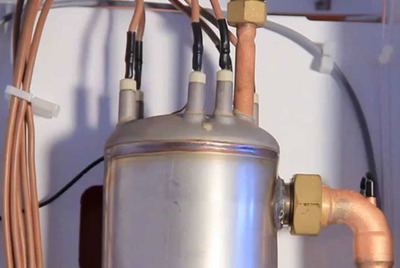
Trying to save money on the automation of heating equipment leads to overheating of the heating system and even rupture of pipelines.
Overheating also occurs due to lack of circulation. In this case, check the pump, filter and overheating thermostat.
Incorrect calculations the required power will result in the heat received from the boiler not being sufficient to heat the premises.
If the pressure does not rise when the boiler is heated, then the tightness of the system may be compromised And the connections need to be tightened, then add a little pressure.
Problems may arise if, when drafting a project, the specific features of a particular object were not taken into account: power surges in the network, low fuel quality, insufficient gas pressure, improper ventilation or failure to follow recommendations for permissible distances from the boiler to other equipment and walls. During repairs, it will be necessary to modernize the engineering work.
Useful video
Watch a video review of a homemade gas boiler made from a car radiator.
Conclusion
The boiler is the most important part of an individual heating system. Therefore Special attention is paid to its construction and installation. The owner of the house weighs all the pros and cons of a homemade boiler in advance.
If the pump in a homemade boiler stops working, there are problems with turning on the automatic system, a short circuit occurs, or a wire breaks, then contact a specialist for a quick diagnosis reasons for the occurrence of malfunctions.








